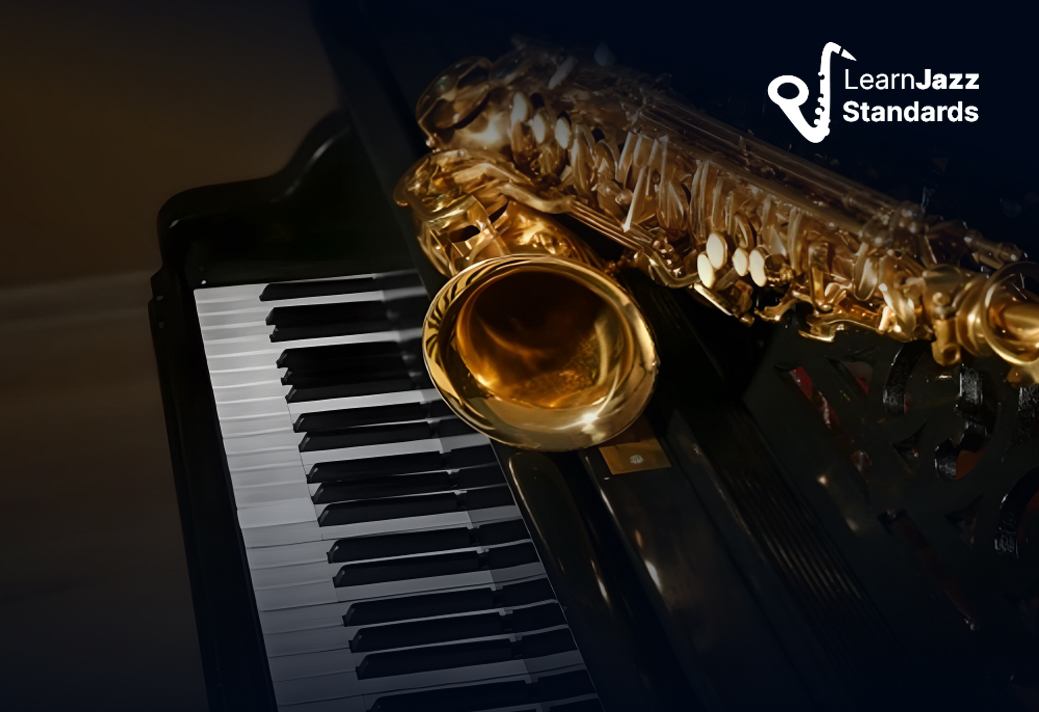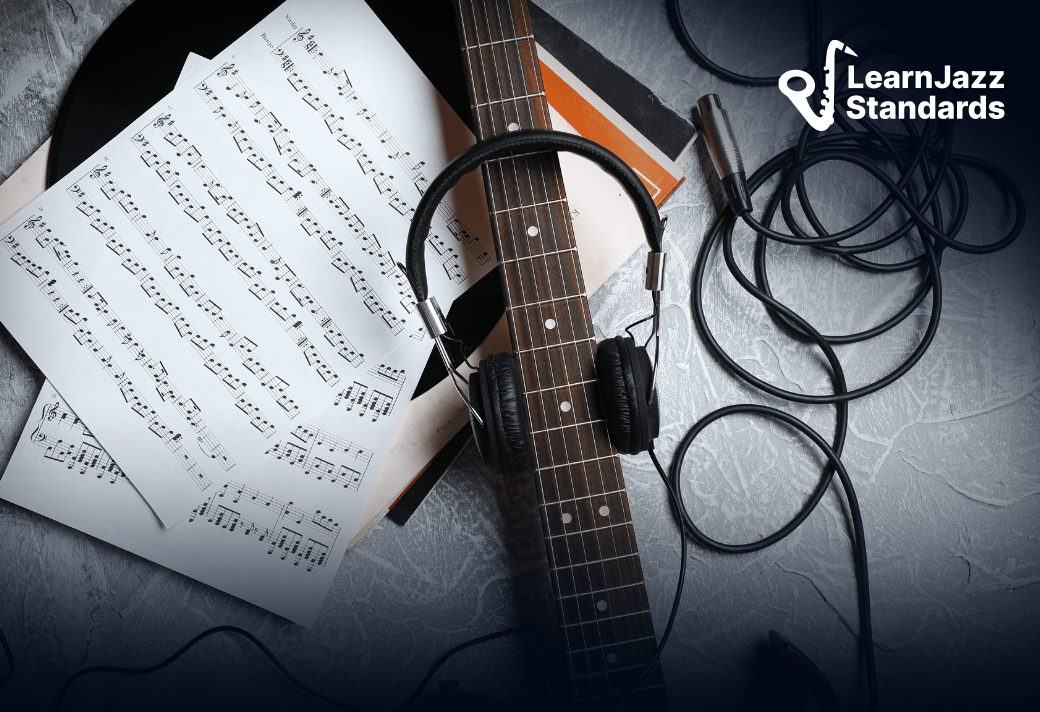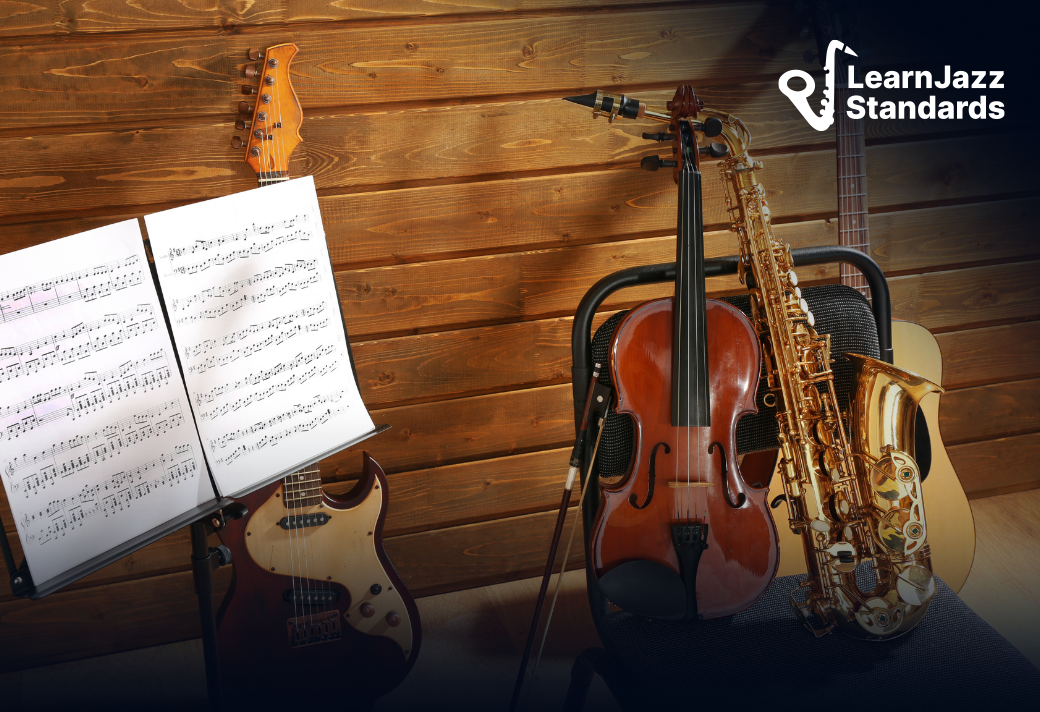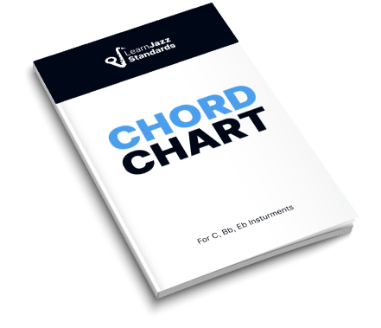Why should you practice polyrhythms?
Well, rhythm is one of the most important aspects of jazz. To take your playing to the next level, you must constantly challenge yourself to improve the rhythmic aspects of your playing.
One way to get better at playing the rhythms and syncopations often found in jazz is to practice playing polyrhythms, which are two or more contrasting rhythms played simultaneously (we’ll provide a more thorough definition later on).
This post will introduce you to the concept of polyrhythms and provide many examples of polyrhythm exercises you can perform to internalize the feeling of playing different rhythms simultaneously. It will help you get started learning polyrhythms and set the stage for learning more complex polyrhythms.
Rhythm is one of the fundamental pillars of music. So, if you want a comprehensive plan to improve your sense of rhythm and incorporate polyrhythms into your jazz playing, you should check out the Learn Jazz Standards Inner Circle.
The Inner Circle has everything you need to improve all aspects of your jazz musicianship—from rhythm and time feel masterclasses to courses on harmony, improvisation, specific jazz standard studies, and much more.
Ready to become the best jazz musician you can be? Check out the Inner Circle today.
Table of Contents
What Are Polyrhythms?
Polyrhythms are a musical phenomenon in which two or more contrasting and independent rhythms are played simultaneously. The two rhythms create rhythmic tension when played together, resulting in a new composite rhythm.
Sometimes, polyrhythms are written into a piece of music for only a section or occur incidentally because of how two or more parts align. However, when polyrhythms are used as the basis of an entire piece of music, it is called a cross-rhythm or is said to have cross-beats.
There are some things that polyrhythms are not, however.
What Polyrhythms Aren’t
Polyrhythms are not polymetric.
There isn’t more than one meter or basic pulse. However, various rhythmic patterns divide the pulse into different, contrasting, yet simultaneous beats. These two or more rhythms contrast each other in how they are divided yet use the same basic pulse.
Polyrhythms are not odd time signatures. Check out this post if you need help playing in odd time signatures.
Odd time signatures like 3/4, 5/4, 7/4, or 5/8 aren’t in and of themselves polyrhythms. A time signature tells you two things—how many beats there are in a measure (the 5 in 5/4) and the basic unit of the measure (the 4 in 5/4).
- 5: There are five quarter notes per measure
- 4: The basic unit of the measure is the quarter note.

Okay, so we have a decent overview of what polyrhythms are and what they aren’t. Now, it’s time to dig into the specifics.
Representing the Cross Rhythm: How To Express Polyrhythms as Ratios
Often, polyrhythms are expressed as a ratio. You might see 3:2 or 4:3. For example, in the case of 4:3, or “four over three,” the four represents four even beats that complete their cycle in the same amount of time that three even beats complete their cycle. With the 3:2 polyrhythm, or “three over two” polyrhythm, the three represent three even beats that complete their cycle in the same space that two complete theirs.
Examples of Polyrhythm: 4 over 3 polyrhythm

Examples of Polyrhythm: 3 over 2 polyrhythm

Generally, polyrhythms with lower ratios, like 3:2 or 4:3, are considered simple polyrhythms. In comparison, higher ratios tend to represent more complex polyrhythms like 5:4 or 8:7. However, the terms “simple” and “complex” can be subjective, based on a person’s familiarity and experience with polyrhythms.
Complex polyrhythms might also refer to situations where multiple layers of various polyrhythms are happening simultaneously. For instance, one instrument could play a 2:3 polyrhythm while another layers a 3:4 polyrhythm.
What may be perceived as “simple” in one musical culture might be seen as “complex” in another.
Familiarity plays a significant role; rhythms that are routine and fundamental in one musical tradition might be challenging for musicians from a different background. For example, many West African drumming patterns are second nature to those raised in that musical tradition but can be difficult for Western-trained musicians.
If you need help improving your time feel, check out these five essential jazz rhythms to improve your rhythmic precision.
How To Play Polyrhythms! Polyrhythmic Exercises
Now it’s time to actually try playing some polyrhythms!
As mentioned before, polyrhythms consist of many simple rhythms played at the same time. Therefore, to get to the point where you are playing highly complex polyrhythms, you need to master isolated duple and triple-time feels by themselves.
Where do you start?
Duple to Triple Meter Switch Ex.
A good exercise to start with is to put a metronome at a moderate tempo and switch back and forth between duple- and triple-based time-feels.
The following exercise consists of quarter notes, eighth notes, and eighth note triplets. Consistently moving back and forth between regular eighth notes and triplet eighths will help you embody the different rhythmic feels within the same rhythm exercise (but with only one voice).

To try playing with two voices, try these basic, foundational polyrhythms by tapping one rhythm with your foot and clapping or singing the other:
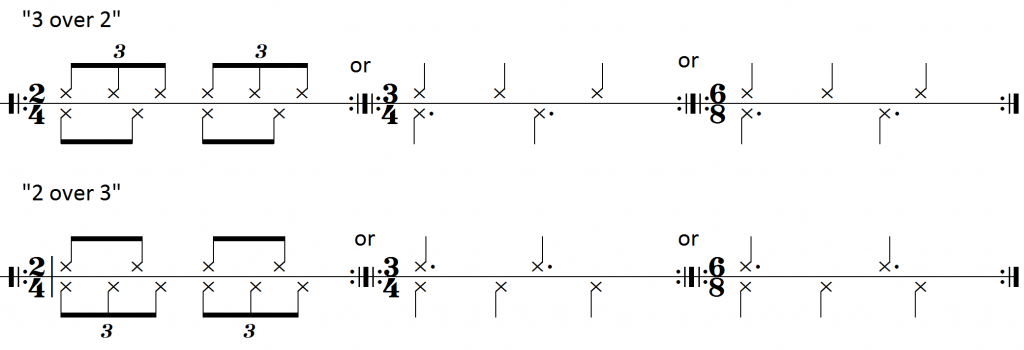
Start with these easier polyrhythms, then move on to more complex rhythms with both a duple and triple time feel. You can even apply the idea of polyrhythms to improvisation, where you can switch back and forth between duple and triple feel over a jazz standard.
For example, take the following 12-bar blues in concert F. Use your right hand to tap the rhythm of the melody and use your left hand or your foot to keep a consistent pulse. Try playing the melody on your instrument while tapping the pulse.
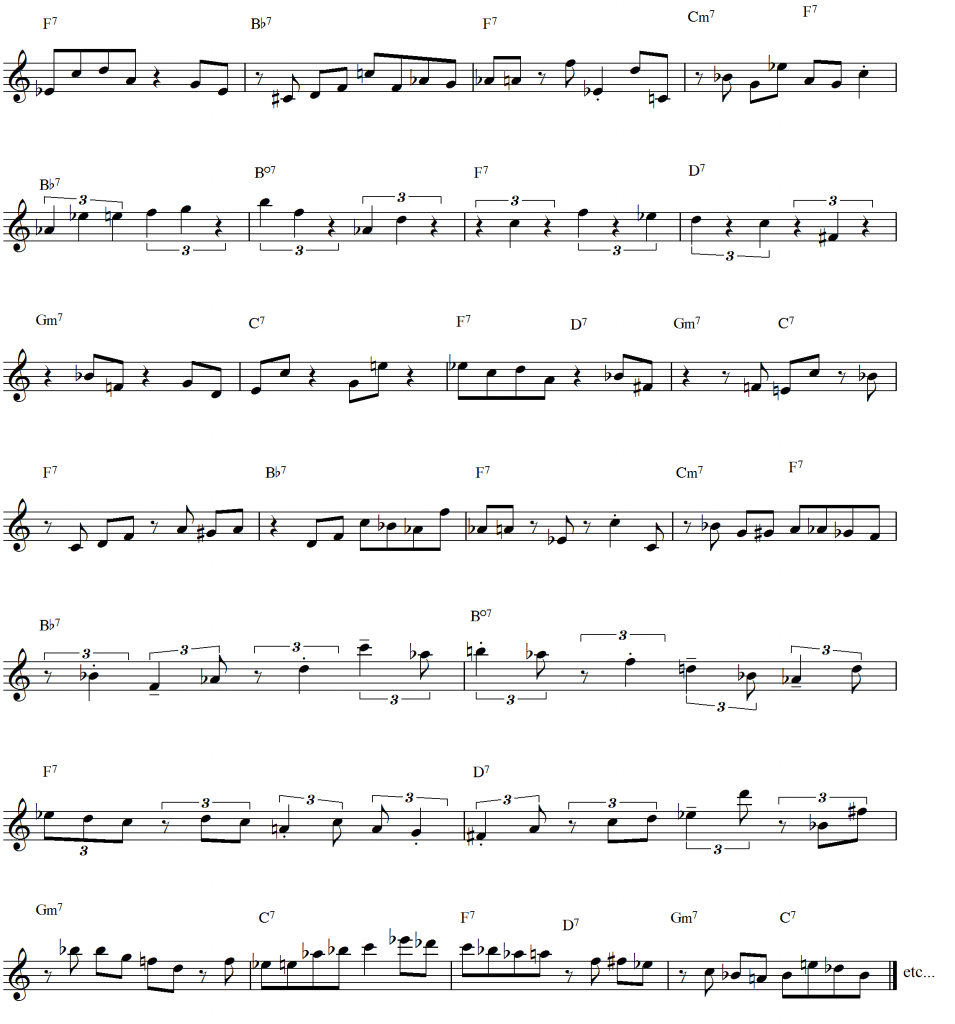
BEFORE YOU CONTINUE...
If music theory has always seemed confusing to you and you wish someone would make it feel simple, our free guide will help you unlock jazz theory secrets.

Figuring Out How To Play Polyrhythms Using Notation
It’s fairly simple to notate complex polyrhythms and figure out how you’d play them. Here, we will build a 5:4 polyrhythm using a method that will help you visualize where the different sit over a certain number of measures.
Building Complex Polyrhythms Step One:
To build a 5:4 polyrhythm, start by taking the 4 (or the denominator in the 5/4 fraction) and filling the measure with quarter notes. We are using a measure of 4/4 because the denominator is 4. If this were a 5:3 ratio, the measure’s time signature would be 3/4 time. If the denominator were a 5, we’d write it in 5/4 time with five quarter notes.

Step Two:
Take your four-quarter notes and turn them into tuplets of whatever the numerator (the other number from the ratio) was. In this case, it was 5, so we’ll turn these into four quintuplets of sixteenth notes. We want to break down each quarter note into parts equal to the numerator from our ratio (5:4).

Step Three:
Put an accent on the first sixteenth note. This is “one.” Then, count over “two,” “three,” and “four.” Place another accent on the next sixteenth note. Repeat this until you finish the measure.

Each accent is the downbeat of your five count over four (notice how there are five). This exercise shows where the “5” lines up against the “4” in time, using 16th notes as the common unit between the two pulses.
Playing These Polyrhythms Step One:
- Using your left hand, play on the downbeat of every quintuplet. This is the “4” in the 5:4 polyrhythm.
- Using your right hand, play on the accents. This is the “5” in the 5:4 polyrhythms.
- Be sure to switch hands!
What you’ll hear looks like this:

The Next Steps
You can tackle some polyrhythmic exercises after you get comfortable switching between duple and triple time feels. Try the ones below, seek out other ones, and make up your own!
Here are three polyrhythmic exercises to get you started (try tapping the bottom rhythms with your foot and clapping and singing the top rhythms, then switch it around):
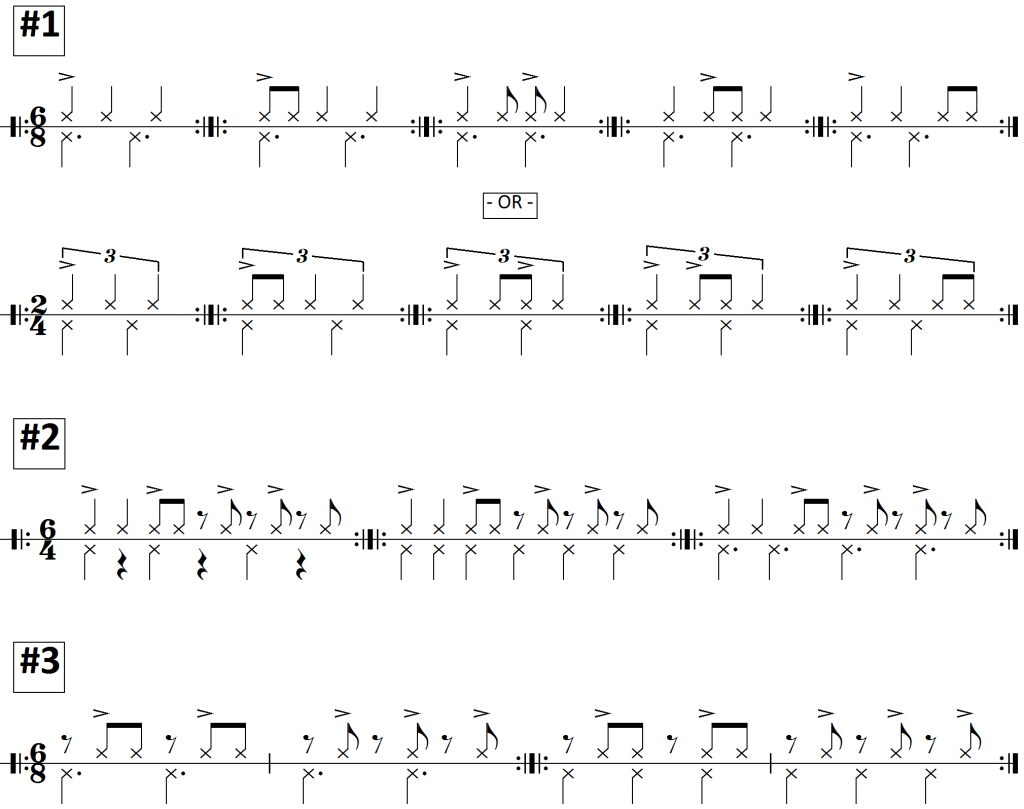
The best part is that you can practice these exercises anywhere, anytime, with or without your instrument.
Examples of Polyrhythmic Music From Across the Globe
Jazz is full of polyrhythms—in fact, polyrhythms are one of the defining rhythmic features of many styles of jazz music. One of the key ingredients of jazz is the music traditions derived from enslaved peoples from West Africa and the indigenous American populations.
This key ingredient has influenced jazz and music all over the Caribbean and Latin America. Despite the West African origin of polyrhythm in jazz. Polyrhythms can be found in human cultures all over the world.
African Cultures
West African Music: In this region, polyrhythms are a cornerstone of the musical tradition. Instruments like the djembe, kora, and balafon often engage in interlocking rhythms, creating a layered and rich sonic experience. For instance, the Ewe people of Ghana are renowned for their intricate drumming patterns, embodying the essence of African polyrhythmic techniques.
Latin American Cultures
Afro-Cuban Music: Central to Afro-Cuban music is the clave rhythm, which possesses distinct polyrhythmic elements. This rhythm is foundational to genres such as rumba, son, and salsa.
Brazilian Music: Genres like samba heavily incorporate polyrhythms, where numerous percussion instruments layer contrasting rhythms, contributing to Brazilian music’s lively and energetic sound.
Caribbean Music
Polyrhythms are abundant in Caribbean music, often marring African rhythmic traditions with other influences. Many of the drumming and dance traditions here showcase multiple rhythms played concurrently.
Indian Cultures
Carnatic and Hindustani Music: Indian classical music may not be polyrhythmic like African music, but it still boasts intricate rhythmic patterns. With the tala system, which dictates rhythmic cycles, musicians overlay varying rhythmic patterns, resulting in a fascinating rhythmic interplay.
Indonesian Cultures
Gamelan Music: Gamelan, native to Java and Bali, is a percussion orchestra where instruments, ranging from metallophones to gongs, play interlocking rhythms.
European Cultures
While polyrhythms aren’t as central in Western music as in African or Indonesian traditions, polyrhythms can be found all over Western classical music, from Mozart to Stravinsky. Also, polyrhythms can be found in certain folk traditions, like flamenco in Spain.
Middle Eastern Cultures
Complex rhythmic structures, often involving layered rhythmic patterns, are common in Middle Eastern drumming. Just as in African drumming ensembles, Middle Eastern percussionists usually layer different rhythms on top of each other, especially in ensemble settings.
This is a broad overview! Within each of these regions and cultures, there are many sub-genres and styles. The widespread use of polyrhythmic drumming reveals the throughline within humanity’s love of complexity and the interplay of different rhythmic elements in music.
Master Polyrhythms and Become The Best Jazz Player You Can Be! Join Learn Jazz Standards The Inner Circle
Are you hitting rhythmic roadblocks in the practice room and can’t seem to break through? Maybe you have trouble playing songs in odd meter or need to work on some time-feel fundamentals to break through.
If so, you should check out the Learn Jazz Standards Inner Circle. The Inner Circle offers members over ten years of incredible jazz education resources, including jazz standard studies and many courses on musicianship, harmony, and improvisational concepts.
Plus, we have Instrument Accelerator courses designed to help you master jazz on your particular instrument.
Ready to become the best jazz player you can be?


